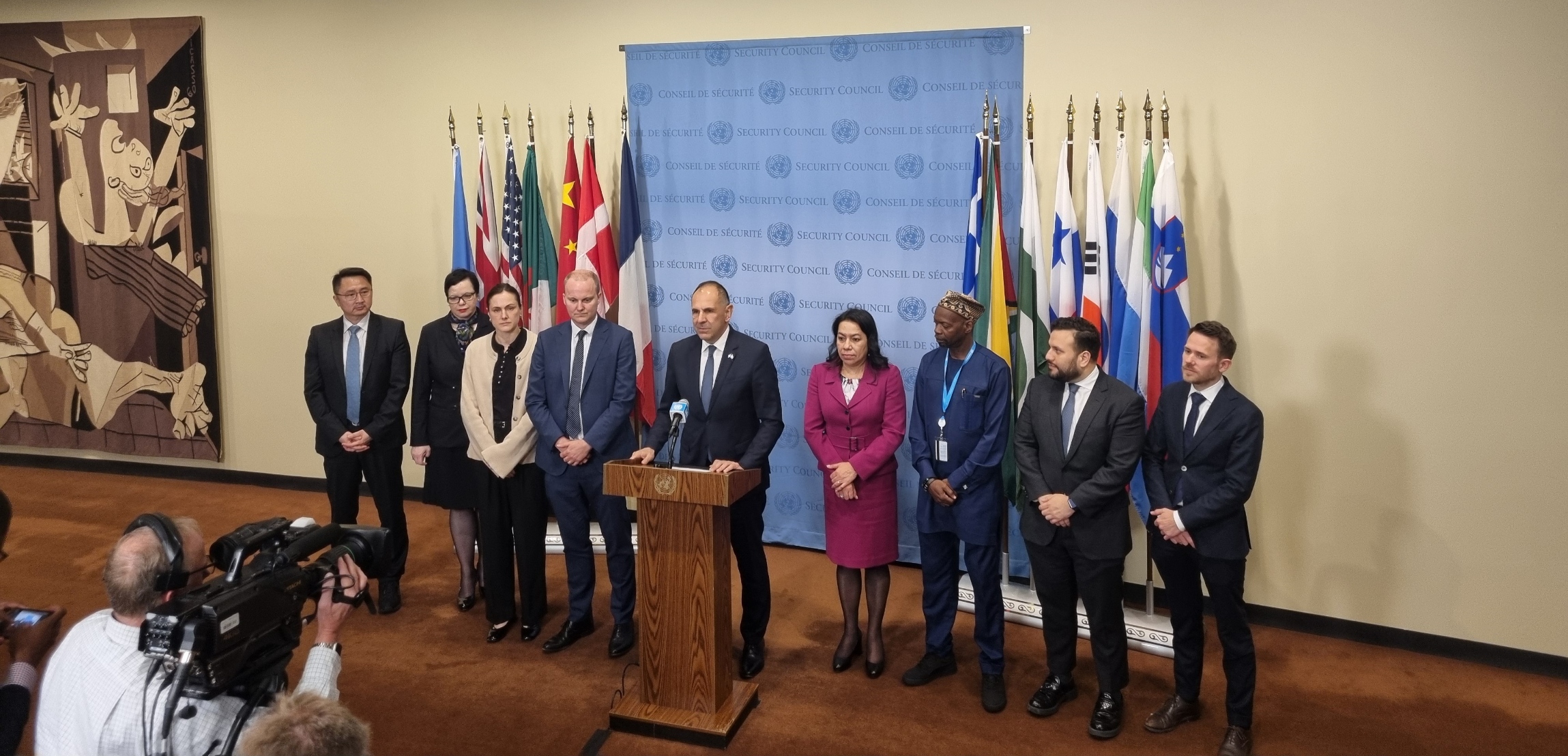Thursday, 22 May 2025
Today, the Security Council convenes for an Open Debate on the Protection of Civilians. Denmark, France, Guyana, Panama, the Republic of Korea, Sierra Leone, Slovenia, the United Kingdom, and my own country Greece, stand before you today to reflect on the protection of civilians in the light of the pressing global climate crisis and armed conflicts.
Climate change, conflict, and the protection of civilians are deeply interconnected. Climate-related impacts continue to exacerbate the risk of conflict, trigger and prolong conflicts, as well as increase the vulnerability of civilians, especially those who live in conflict-affected areas. They also affect the character and the extent of the protection risks faced by civilians placing additional strain on the capacities of state security forces and other mandated actors, including UN peace operations.
Ten out of twelve countries that experience the highest ecological threats are in conflict , while 70% of climate vulnerable countries are the most fragile . The burden falls heaviest on the most vulnerable communities who struggle to protect themselves from these multifaceted and compounding threats.
With an estimated 20 million people internally displaced by climate hazards each year, the nexus of conflict, displacement and climate change leads to constantly evolving protection environments. The vulnerabilities that displaced civilians face both in transit and in host communities requires equally adaptive, multisectoral protection efforts.
The effects of severe flooding, for example, can disrupt access to education leaving children and youth more vulnerable to recruitment and exploitation by armed actors. Additionally, older persons and persons with disabilities face unique challenges to mobility and survival in climate-affected areas, particularly where infrastructure and support services are lacking. Women and girls are also disproportionately affected. Existing inequalities limit their access to resources such as food, water, land, and adequate housing. In many contexts, women and girls are more likely to be exposed to disaster-induced risks and losses, less able to adapt to changes in climatic conditions and required to travel further to collect water and firewood for fuel and income, often exposing themselves to increased risk of attack, including sexual and gender-based violence.
Most UN Peace Operations with a protection of civilians’ mandate operate in regions highly impacted by climate change. These Missions face growing challenges in implementing their protection strategies due to unpredictable environmental conditions – such as floods, mudslides, droughts, desertification and disease outbreaks which exacerbate existing conflict and violence – complicating peace efforts. In order to fulfill their protective mandate, peace efforts need to evolve to ensure more adaptive, climate-sensitive and resilient strategies as well as early warning mechanisms that can anticipate and respond to these challenges. They must be prepared to anticipate the impact extreme weather events can have on their ability to execute core mandated tasks, including protection of civilians.
Rather than securitized responses alone, we should prioritise comprehensive, conflict-sensitive strategies that strengthen community resilience, address the root causes of conflict, enhance adaptive capacity and the protection and assistance needs of the most vulnerable populations. By doing so, we not only improve responses to today’s protection challenges brought by climate change, but also better anticipate those for tomorrow.

